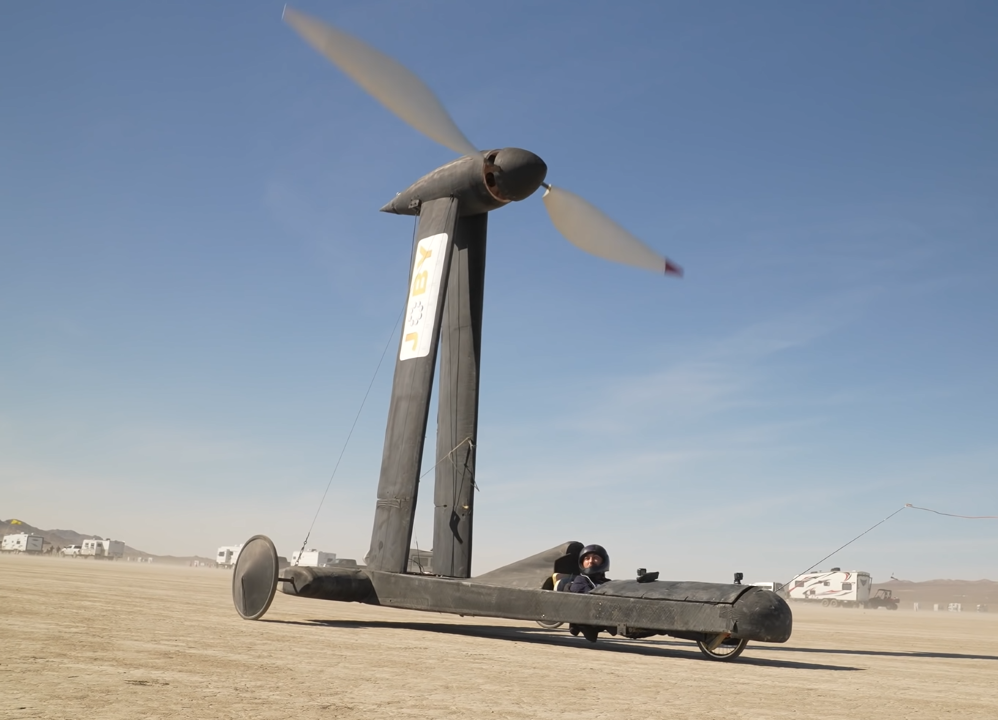The unique vehicle was built by a team of two people – Rick Cavallaro, the inventor, and the owner Neil Cutcliffe. The wind-powered car called Blackbird can travel faster than the current measured maximum wind speed during the test. How is this possible? The principle of downwind power is explained by tester Derek Muller.
No Motor, No Batteries
The Blackbird car contains no motor or battery, it is powered by wind alone. The wind doesn’t turn the propeller-like a windmill. Instead, the wheels on the propeller are set to turn in the opposite direction, pushing the air backward like a fan. If the propeller spun like a windmill, that would mean it no longer had any thrust. However, because the propeller is working as a fan, it is still accelerating the air backward and creating thrust.

As soon as the wind pushes on the whole vehicle, the vehicle will start up and get moving. The spinning wheels turn the propeller in the opposite direction to the wind pushing it. As the propeller pushes the air back, the air pushes the propeller forward and accelerates the vehicle. Once the vehicle reaches wind speed, no wind is visible on the vehicle.
Faster than the Wind
The vehicle can continuously go faster than the current wind speed. The vehicle’s linkage creates thrust by the propeller accelerating the air backward. The wind behind the propeller is slower than the surrounding air. This is evidence that the energy comes from the wind.

People often ask why the energy coming from the wheels and spinning the propeller doesn’t slow the wheels down more than the propeller pushes back. Muller replies: “Because the wheels are moving much faster over the ground than the propeller is in the air (because there is a tailwind).”
Cavallaro, Cutcliffe, and Muller have produced evidence that a vehicle powered by a tailwind can be faster than the wind itself. The test run was on flat ground, so gravity cannot be counted on to help.
Source and credit: youtube.com/watch?v=jyQwgBAaBag, en.wikipedia.org/wiki/Blackbird_(wind-powered_vehicle)




